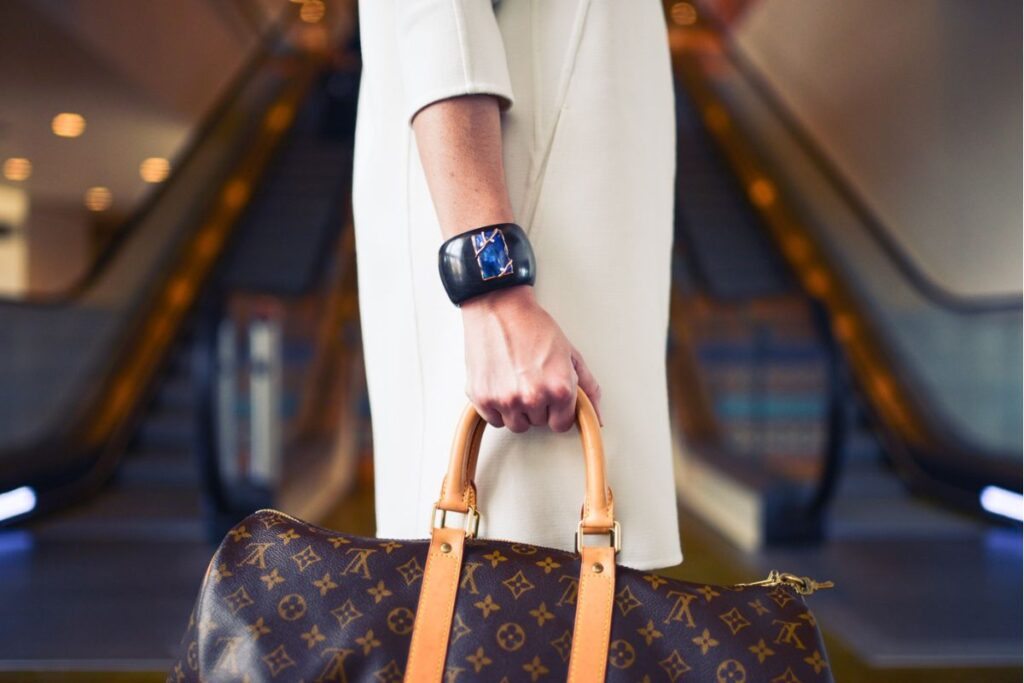
Designer brands like Hermes, Gucci, and Louis Vuitton have become symbols of wealth and status in our consumerist culture. People are willing to spend exorbitant amounts of money on luxury handbags and accessories, such as the coveted Birkin bag, despite the high price tags and the challenges associated with purchasing them. We will explore how designer brands prey on our psychology, target the poor instead of the rich, keep people poor, and the potential impact on our financial well-being. We will also discuss the “Pretty Woman Effect” and the allure of luxury in our society.
Designer Brands Target the Poor
The allure of looking rich
In a world where designer brands dominate the fashion scene, it’s easy to fall into the trap of believing that wearing high-end labels equates to true wealth and success. These brands often portray an image of prestige and affluence, but the reality is more complex. In this article, we’ll delve into the tactics employed by designer brands to attract middle and lower-class consumers, the true cost of conspicuous consumption, and how they prey on our desires to fit in and belong.
Conspicuous consumption and its role in enhancing prestige
Conspicuous consumption is the act of spending money on luxurious items and services primarily to display one’s wealth and social status. Designer brands have mastered this concept, creating an allure around their products that suggests owning them will elevate your social standing. But here’s the catch: true wealth doesn’t always come with a designer label.
The misconception that designer brands represent true wealth
Designer brands may exude opulence, but they don’t necessarily reflect genuine financial stability. The uber-rich often choose understated, logo-free attire, paradoxically shunning the conspicuous logos that middle-class and lower-class consumers are drawn to. These wealthy individuals understand that real prosperity isn’t about displaying labels but rather about accumulating assets and financial security.
The irony of the uber-rich not flaunting designer logos
Keeping You Poor
- The bread and butter of designer brands: middle and lower-class consumers.
Designer brands thrive on the patronage of middle and lower-class consumers who aspire to emulate the lifestyle of the rich and famous. These consumers often prioritize immediate gratification over long-term financial health, unknowingly feeding the machine of conspicuous consumption. - The cost of conspicuous consumption:
Splurging on designer products can come at a steep price. Many people go into debt trying to keep up with the latest fashion trends, ultimately hindering their ability to accumulate wealth and achieve financial freedom. - The value of frugality and wealth accumulation:
Rather than succumbing to the allure of designer labels, it’s crucial to embrace frugality and focus on wealth accumulation. The concept of “The Millionaire Next Door” teaches us that true millionaires often lead unassuming lives, choosing to invest and save wisely instead of indulging in extravagant purchases. - The Millionaire Next Door concept.
Preying on Insecurity
- Celebrities and influencers as marketing tools:
Designer brands understand the power of influence in the modern world. They utilize celebrities and influencers to endorse their products, creating a sense of aspiration and desire among their target audience. - Illusion of wealth through endorsements and partnerships:
Endorsements and partnerships with celebrities can create the illusion that wearing these brands will grant you access to the same glamorous lifestyle. This emotional appeal taps into the vulnerability of middle-class and lower-class individuals who yearn to fit in and belong. - The vulnerability of middle-class and lower-class individuals.
- Exploiting psychological desires to fit in and belong.
The “Pretty Woman Effect”
Remember the iconic scene in the movie “Pretty Woman” where Julia Roberts’ character is mistreated in a luxury boutique but returns later, laden with shopping bags? This fictional story highlights the paradoxical impact of negative experiences; they can ironically increase sales for luxury brands.
- A viral story highlighting mistreatment turned into a shopping spree
- Rudeness as a sales technique for luxury brands:
Some luxury boutiques employ rudeness as a sales technique, creating an exclusive and intimidating atmosphere. Paradoxically, this approach can make consumers feel like they’ve achieved something significant by making a purchase, further fueling the desire to flaunt designer labels. - How negative experiences can paradoxically increase sales:
The “Pretty Woman Effect” demonstrates that even mistreatment can reinforce the allure of designer brands. It’s a testament to the powerful psychological tactics employed by these brands to manipulate consumer behavior.
Conclusion
Designer brands have successfully marketed themselves as symbols of wealth, status, and exclusivity. However, their target audience is not the truly wealthy but rather the middle and lower classes. By preying on our desire for social status and playing into our insecurities, these brands keep us trapped in a cycle of conspicuous consumption that can hinder our financial well-being.
It’s essential to recognize the illusion of luxury and consider the long-term impact on our wallets and the planet. Instead of chasing designer brands, we should focus on building genuine wealth through frugality, wise investments, and financial education.

